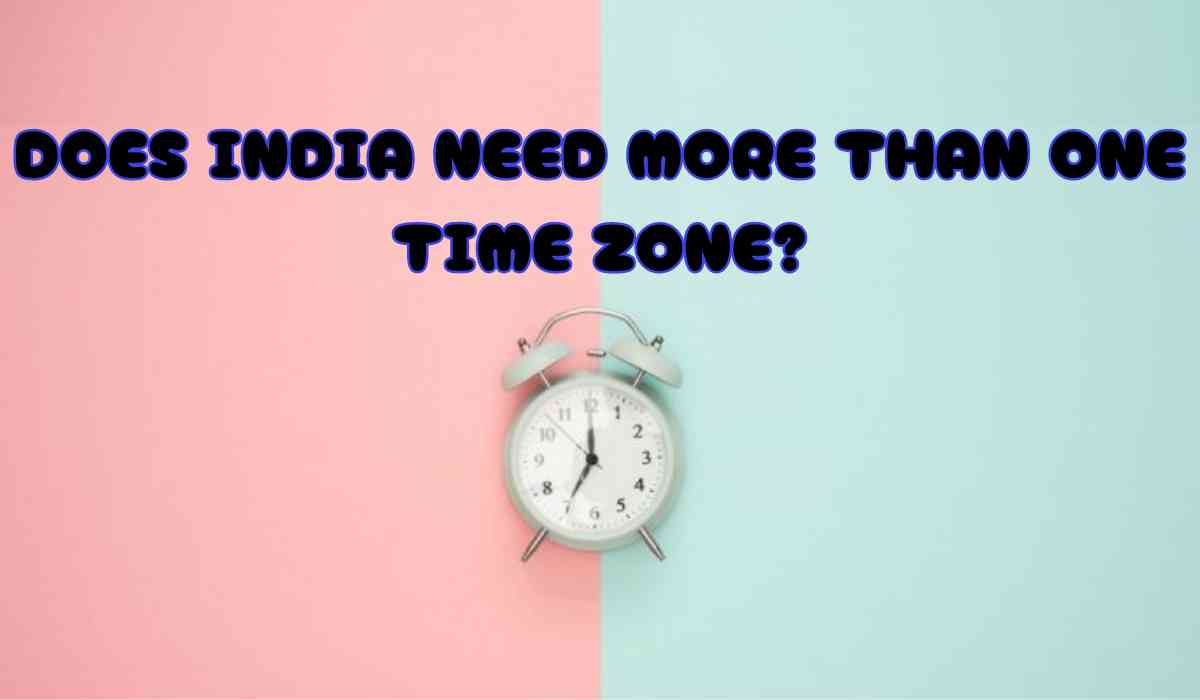India, a time traveler's enigma, where time takes its own unique path.
It's 9.5 hours ahead of New York, 5.5 hours ahead of London, and 3.5 hours behind Tokyo. Travelers from Kolkata to Mumbai often notice the subtle shift in daylight, where mornings greet them later in Mumbai while evenings stretch longer with sunlight.
For over a century, India's official time has maintained this peculiar 30-minute deviation, joining a select few like Iran, Myanmar, and parts of Australia. Spanning what should logically be two time zones, India defies the norm. Despite frustrations from some quarters, it clings to its unique chronology, a testament to a rich and complex history of timekeeping.
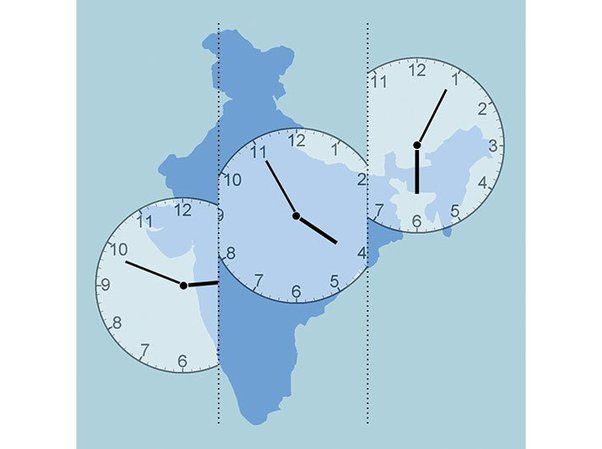
History of the Indian Standard Time
India's adoption of standardized time traces back to its colonial period, coinciding with the global advancements in transportation during the 19th century.
-
Pre-Standardization Era:
- Before the 19th century, local times prevailed across India, varying even within small geographical regions. The dominant influence behind the scenes was the East India Company, a formidable British trading entity, which controlled significant portions of the subcontinent and operated an observatory in Madras (present-day Chennai) by 1792.
-
Emergence of Madras Time:
- Around 1800, Madras time emerged as a contender for standardization, supported by the burgeoning railway system and the commercial interests of the East India Company. Despite initial contention with other powerful cities like Bombay and Kolkata, Madras time gained prominence due to the influence of railways.
-
Global Time Zone Establishment:
- Concurrently, a global discourse on time standardization unfolded, primarily driven by the necessity to synchronize transcontinental travel and maritime navigation. The International Meridian Conference held in Washington D.C. in 1884 laid the groundwork for establishing international time zones, centered around the Greenwich Meridian.
-
Adoption Challenges in India:
- Despite the gradual acceptance of Madras Time by the Indian railways, resistance persisted among workers and local communities, who resisted the imposition of standardized timings. This resistance stemmed from the disruption of established rhythms and routines.
-
Establishment of Indian Standard Time (IST):
- By 1905, Madras Time became the national standard in India, albeit with lingering opposition. Scientific circles proposed aligning India's time with GMT, suggesting two time zones.
However, the colonial government favored a unified time, leading to the introduction of Indian Standard Time in 1906, set at five and a half hours ahead of GMT.
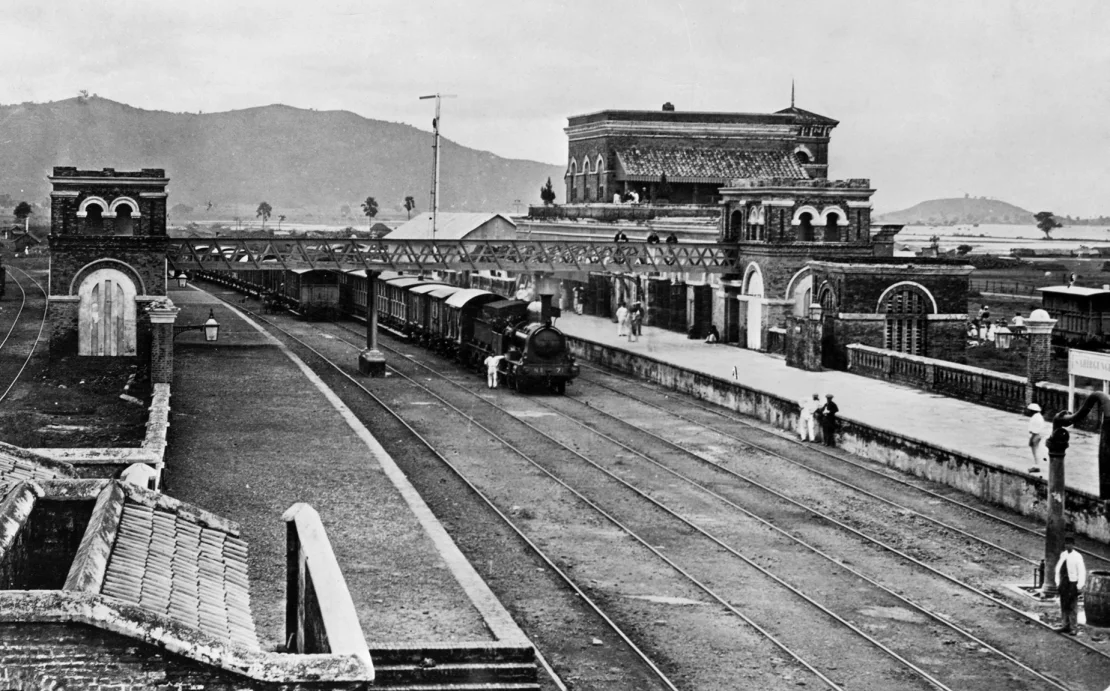
Image: India's railway system was established in the mid-1800s
Why are there differing time zones around the globe?
-
Earth's Rotation and Revolution: The variation in time zones globally stems from Earth's dual motion—its rotation on its axis and its revolution around the Sun.
-
Time Discrepancy with Earth's Rotation: Earth rotates by 15° per hour, resulting in a complete 360º rotation producing 24 hours. Consequently, time zones, each differing by one hour, are established to accommodate this phenomenon.
-
Geographical Determinants: While these time zones are primarily delineated by longitudes, they don't always follow a direct path through a country. Governments take into account their nation's geography when designating time zones.
-
Official Timekeeping Authority: Each country maintains its official time through governing bodies. For instance, in India, Indian Standard Time (IST) is anchored at longitude 82.5°, passing through Mirzapur near Allahabad in Uttar Pradesh.
-
Timekeeping Precision: IST is 5 hours 30 minutes ahead of Greenwich Mean Time (GMT), now known as Universal Coordinated Time (UTC). India's CSIR-National Physical Laboratory (NPL) in New Delhi, equipped with five caesium atomic clocks, meticulously tracks time.
-
International Calibration: Indian time, with an accuracy of 20 nanoseconds, is synchronized with UTC, governed by the International Bureau of Weights and Measures in Sèvres, France, ensuring global time coherence.
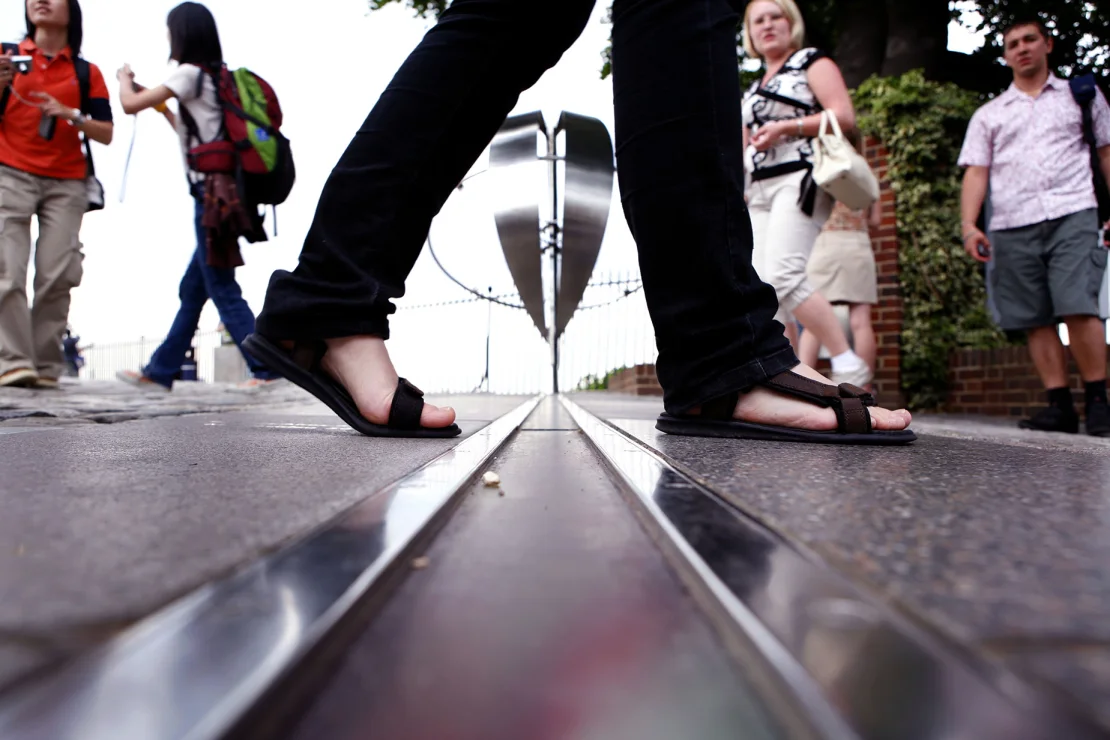
Image: A tourist walks across the Prime Meridian in Greenwich, London
Should India have two time zones?
India's debate over the adoption of two time zones has deep historical roots. The idea of reverting to two time zones resurfaced several times over the years.
-
Historical Context:
- During the establishment of global time zones in 1884, India was initially designated to have two time zones: Bombay time and Calcutta time.
- However, in 1905, a single time zone was adopted for all of India using the 82.5° meridian.
-
Past Debates and Proposals:
- Throughout history, there have been discussions regarding the feasibility of implementing two time zones in India.
- In the late 1980s, researchers proposed the idea to save electricity, but it was not implemented.
- In 2002, a government panel dismissed a similar proposal citing logistical complexities and risks, including concerns about railway safety.
-
Recent Developments:
- Last year, India's official timekeepers suggested the adoption of two time zones.
- The proposal suggests one time zone for most of India and another for eight states, primarily in the northeast.
- The separation between the two time zones would be one hour.
- Researchers at the National Physical Laboratory highlighted the adverse effects of having a single time zone, such as early sunrise conflicting with official working hours, leading to the loss of daylight hours and increased energy consumption.
-
Regional Disparities and Impact:
- The issue of a single time zone disproportionately affects regions like the northeast, where geographical differences result in significant variations in sunrise and sunset times compared to other parts of the country.
- Scholars, including Maulik Jagnani, emphasize the impact on natural circadian rhythms, particularly among children, leading to disrupted sleep patterns and adverse educational outcomes.
- The National Physical Laboratory underscores the correlation between circadian rhythms, health, work efficiency, and the overall socio-economic development of the region.
-
Government Response:
- Despite calls for the adoption of two time zones, a government committee in 2019 rejected the proposal citing unspecified "strategic reasons."
While the call for two time zones persists, India's current singular time zone remains unaltered, reflecting the complexities and challenges in addressing this longstanding issue.
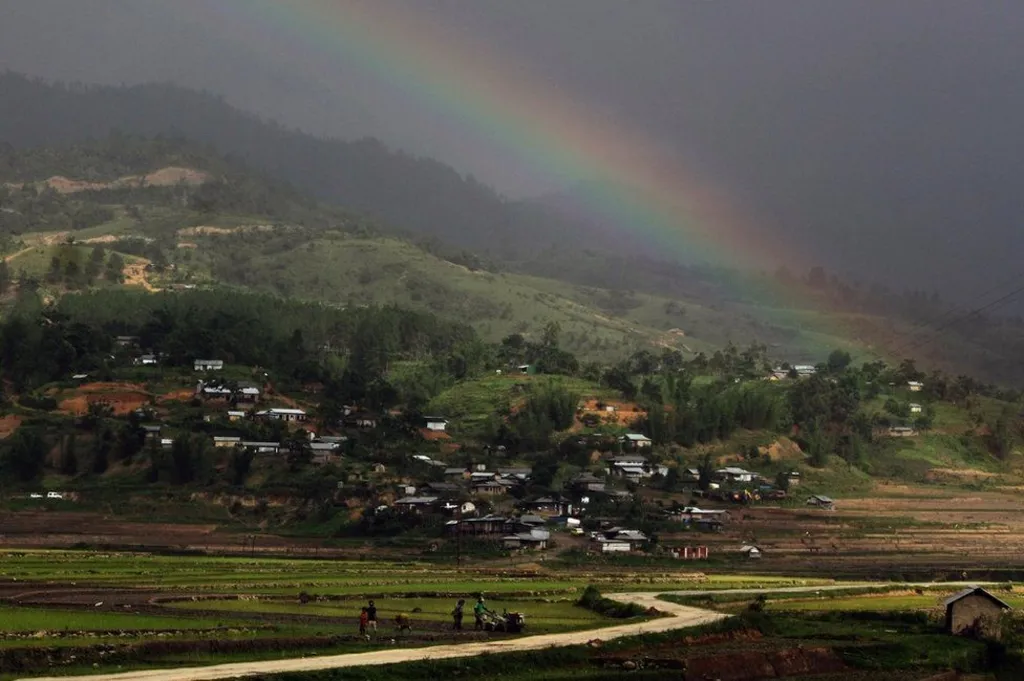
Image: The sun rises nearly two hours earlier in the east of India than in the far west
Why is the Indian Standard Time (IST) not universally embraced?
India's current single time zone system is a vestige of British colonial rule and is often perceived as a symbol of unity. However, not all stakeholders view the Indian Standard Time (IST) favorably.
-
India's vast expanse of approximately 3,000km east to west encompasses nearly 30 degrees of longitude, resulting in a significant two-hour difference in mean solar times. To put it into perspective, it's akin to New York and Utah sharing a time zone in the United States, affecting over a billion individuals, a substantial portion of whom live in impoverished conditions.
-
The disparity in sunrise times between the eastern and western regions of India, almost two hours apart, has fueled criticism of the single time zone. Advocates for change argue that adopting two distinct time zones would optimize daylight utilization, particularly in the east where daylight hours begin and end much earlier. This is crucial as early sunrise prompts earlier use of artificial lighting, contributing to increased electricity consumption.
-
The natural rhythm of our bodies, governed by the rising and setting of the sun, is disrupted by a single time zone. Maulik Jagnani, an economist at Cornell University, posits in a recent study that this disruption adversely affects sleep quality, particularly among underprivileged children. A delayed sunset correlates with later bedtimes, resulting in reduced sleep duration. Just an hour's delay in sunset can rob children of 30 minutes of sleep.
-
Analysis of data from the India Time Survey and the national Demographic and Health Survey reveals that children in areas with later sunsets experience lower educational attainment. Each hour of delay in annual average sunset time translates to a decrease of 0.8 years in education. Moreover, children in such regions are less likely to complete primary and middle school, diminishing the overall quality of their education.
-
Jagnani's research suggests that the impact of sunset-induced sleep deprivation is more acute among the impoverished, especially during periods of economic hardship. Poor living conditions exacerbate sleep disturbances, compounded by factors like noise, heat, and overcrowding. Additionally, financial constraints limit access to sleep-improving amenities, further compromising sleep quality and educational outcomes.
-
Jagnani proposes a policy shift towards two time zones—UTC+5 hours for western India and UTC+6 hours for eastern India—which he estimates could yield annual human capital gains exceeding $4.2 billion, equivalent to 0.2% of GDP. This adjustment, he contends, would better align with regional solar patterns, potentially enhancing both sleep quality and educational outcomes.
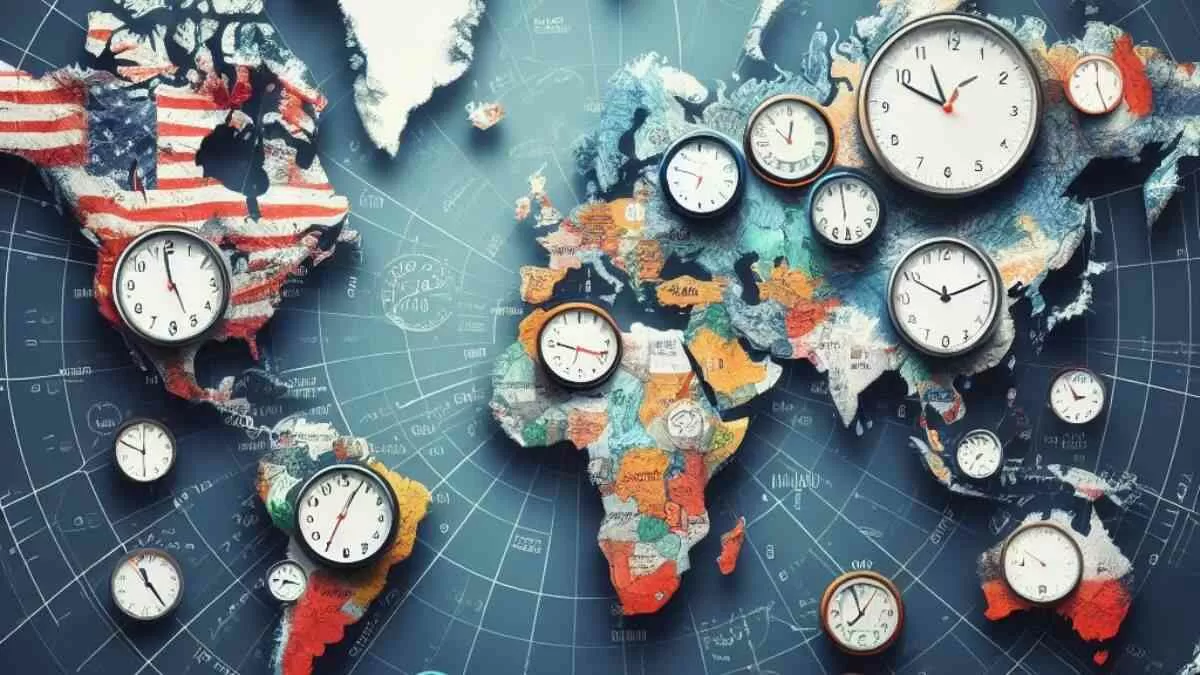
Image: Countries Which Has Most Time Zones
The politics of the time
The 30-minute time difference in India traces back to its colonial history, a remnant that persists today. Other nations have also adjusted their time zones, notably Venezuela and North Korea, for various reasons.
-
Venezuela's Time Tweak: In 2007, Hugo Chávez, Venezuela's former president, adjusted the nation's clocks back by half an hour. The rationale behind this move was to extend daylight hours for schoolchildren. However, this alteration was later reversed by Nicolas Maduro, the current leader of Venezuela.
-
North Korea's Time Travel: A significant temporal divergence occurred in 2015 when North Korea introduced "Pyongyang Time." This new time zone positioned the country eight and a half hours ahead of GMT, creating a noticeable contrast with South Korea's time zone, and thus symbolizing a departure from synchronization between the two nations.
-
India's Colonial Chronology: India's approach to time zone governance during its colonial era was marked by a complex interplay of political, scientific, and commercial interests. Described as reminiscent of the chaotic yet inventive scenarios depicted in Terry Gilliam's "Brazil" or the convoluted contraptions envisioned by Rube Goldberg, India's time zone decisions reflected a patchwork of influences. According to Gordon, the decision-making process resembled a Rube Goldberg-esque construction, characterized by a blend of opportunism and naivety among various stakeholders.
The resulting temporal framework was a testament to the eccentricities and unpredictability of political dynamics during that period.
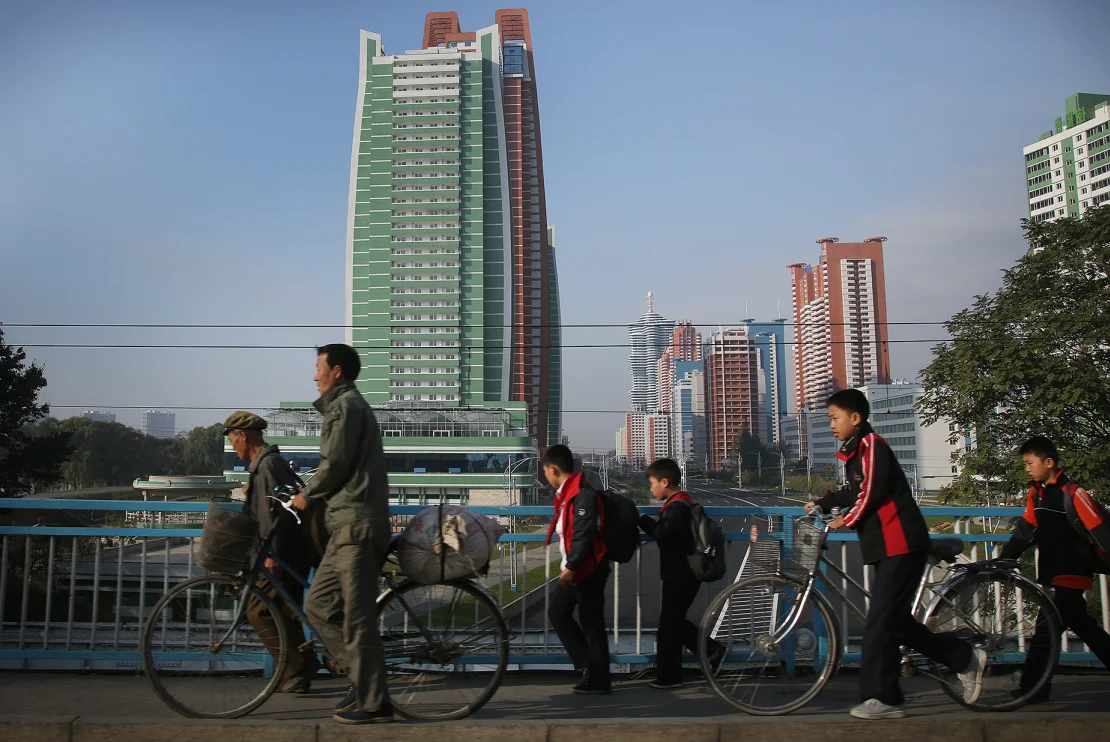
Image: In 2015, North Korea set its own time zone in order to be different from South Korea
Challenges Arising from a Single Time Zone
-
Geographic Extent: India's vast expanse covers approximately 3,000km from east to west, equivalent to roughly 30 degrees of longitude. Consequently, there exists a two-hour discrepancy in mean solar times between the eastern and western borders of the nation.
-
Daylight Disparities: The northeastern states experience sunrise and sunset earlier than the conventional working hours, resulting in a loss of daylight during productive periods.
-
Productivity Impact: The misalignment between solar and standard times in the eastern region diminishes productivity. As twilight descends and darkness encroaches, our circadian rhythm initiates the production of melatonin, inducing a sense of drowsiness.
-
Adverse Effects on Lives: According to the National Physical Laboratory, the single time zone adversely affects daily routines as the sun rises and sets significantly earlier than standard working hours.
-
Increased Energy Consumption: Residents in the eastern regions resort to artificial lighting sooner in the day, contributing to heightened electricity consumption.
-
Seasonal Exacerbation: During winter, the issue amplifies as the sun sets earlier, necessitating increased electricity consumption to maintain activity levels.
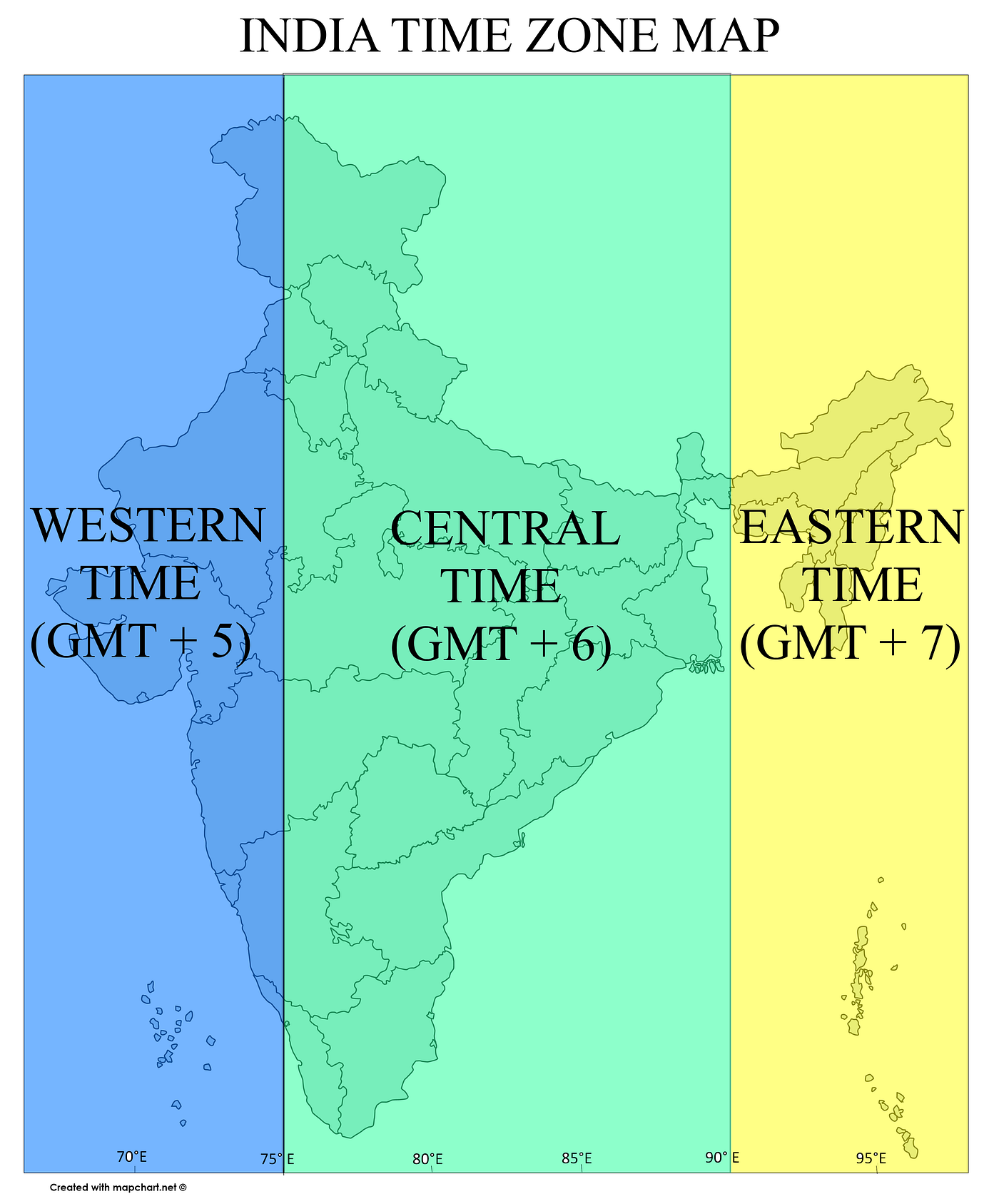
Potential Advantages of Introducing Two Time Zones in India
-
Energy Savings: Research from the National Physical Laboratory indicates that adopting two time zones could yield an annual energy saving of approximately 20 million kWh for India. This is primarily due to the more efficient utilization of daylight hours, currently underutilized in the eastern region.
-
Enhanced Productivity: Aligning sunrise and sunset timings with working hours could facilitate better planning and productivity in accordance with natural daylight cycles.
-
Health and Well-being: Implementation of two time zones could promote healthier and happier citizens attuned to their circadian rhythms. Notably, the tea gardens of Assam have informally adhered to 'Chaibagaan time', one hour ahead of IST.
-
Environmental Impact: Reduced energy consumption would contribute to lowering India's carbon footprint, demonstrating the country's commitment to mitigating climate change.
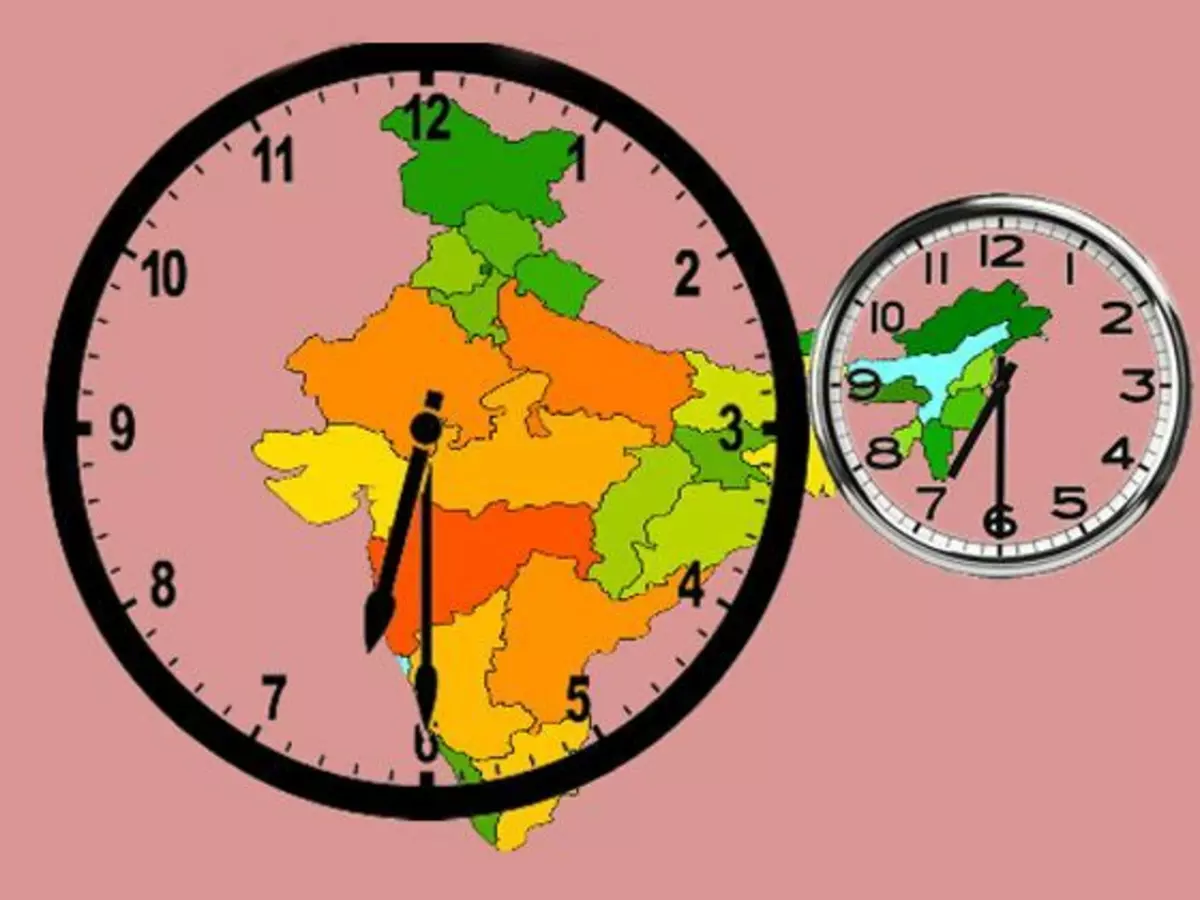
Challenges in Implementing Two Time Zones
-
Rail Safety Concerns: The introduction of two time zones may heighten the risk of rail accidents due to incomplete automation of railway signals and numerous single-track routes.
-
Clock Adjustments: The necessity to reset clocks upon crossing time zone boundaries could introduce inconvenience and potential synchronization issues.
-
Business Operational Challenges: Misalignments in office timings across different time zones could pose difficulties for sectors such as banking, industries, and multinational corporations.
-
Boundary Determination: Establishing the demarcation line between the two time zones presents a logistical challenge.
-
Political Ramifications: Introducing two time zones may have adverse political implications, further fragmenting the nation along additional lines, in addition to existing divisions based on religion, caste, race, and language.
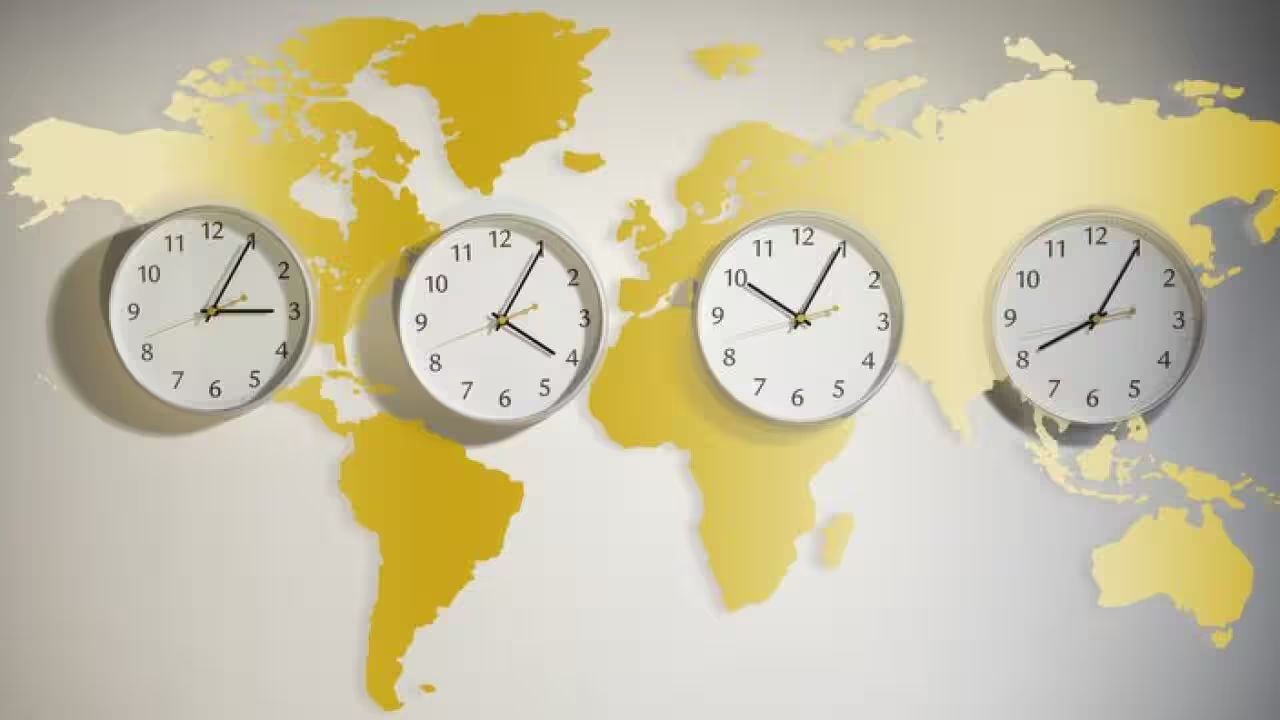
As we wrap up, let's reflect on the importance of synchronizing our daily schedules with the natural rhythms of our bodies. It falls upon our governmental bodies and other relevant stakeholders to explore solutions that optimize daylight utilization while respecting the biological clocks of all individuals across India. This endeavor demands thorough data gathering and vigilant monitoring to guarantee the seamless integration of any forthcoming adjustments.
Ultimately, the lesson to be learned is profound: the quality of our sleep directly impacts our productivity, and the disruption caused by erratic time zones disproportionately affects vulnerable populations, particularly underprivileged children. Let's strive for harmony between our societal structures and the innate patterns of human biology for a healthier, more efficient future.
With inputs from agencies
Image Source: Multiple agencies
© Copyright 2024. All Rights Reserved Powered by Vygr Media.

